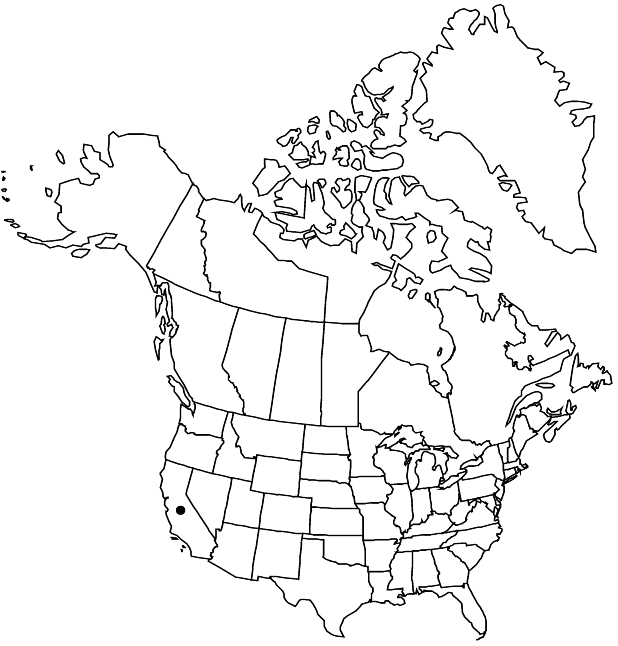Ribes viburnifolium
Proc. Amer. Acad. Arts 17: 202. 1882 ,.
Plants evergreen, 0.5–1 m. Stems erect or arched (no short-shoots), with white, sessile, resinous glands; spines at nodes absent; prickles on internodes absent. Leaves: petiole 0.3–1 cm, strigillose and with yellow or white, sessile glands; blade ovate to obovate, unlobed, 2–4 cm, base truncate, margins shallowly toothed, sometimes undulate, apex rounded, surfaces with yellow, sessile glands abaxially, glabrous adaxially. Inflorescences erect, 6–15-flowered racemes, 1.5–5 cm, axis glandular, flowers evenly spaced. Pedicels jointed, 2–5 mm, glandular; bracts narrowly lanceolate, 2–3.5 mm, glandular. Flowers: hypanthium reddish, turbinate, 2–5 mm, glabrous, sessile-glandular; sepals not overlapping, spreading, reddish, triangular to broadly deltate-ovate, 2–3 mm; petals widely separated, erect, reddish-brown, oblong to oblong-obovate, not conspicuously revolute or inrolled, 2 mm; nectary disc prominent, reddish to reddish-brown, 5-angled, completely covering top of ovary; stamens nearly as long as petals; filaments linear, 2 mm, glabrous; anthers white, oval, 0.1 mm, apex with small cuplike depression; ovary sparsely sessile-glandular; styles connate 1/2 their lengths, 1 mm,glabrous. Berries palatable, red, globose, 5–6 mm, glabrous. 2n = 16.
Phenology: Flowering Feb–Apr.
Habitat: Chaparral
Elevation: 30-600 m
Distribution

Calif., Mexico (Baja California)
Discussion
Ribes viburnifolium is native on Santa Catalina Island and in northwestern Baja California. It is commonly cultivated; a population from a planting in San Clemente Canyon, Orange County, persists. Reports of populations in seemingly natural areas in Panama are unconfirmed. The leathery leaves are borne on long shoots, and the entire plant has a spicy, resinous fragrance.
Selected References
None.